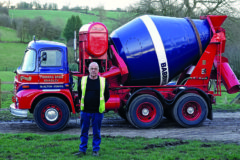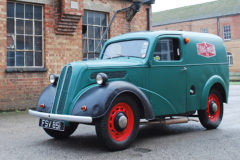The Ford 3000
Posted by Chris Graham on 28th May 2022
The Ford 3000 was a popular tractor and Derek Pugh, from Church Stretton in Shropshire, owns a fine example, as Bob Weir reports.

Derek and Janet are both big Ford and Fordson tractors fans, and the 3000 is certainly one of their favourites.
Mention the old county of Salop and both farming and tractors immediately spring to mind. Shropshire has traditionally been associated with agriculture although, in recent years, the economy has become more service-orientated. Nevertheless, collecting tractors remains a popular pastime, and there are still plenty of old treasures tucked away in local barns.
Derek was born and raised in Shropshire, and comes from a farming background. “The family ran a mixed farm, and my father kept a herd of about 30 cows,” he recalls. “Things were a lot different back in the days when I was growing up. Although the farm was only 53 acres, this was enough to make a decent living. I continued dairying until 1987, when the family decided to sell up.”
A Major fan
Derek recalls that his father liked Fordson tractors, and was particularly keen on the E27N Major. “He had this TVO-powered E27N, because money was a bit tight after the war,” he explained. “I learned to drive on that tractor when I was still a boy. My father kept it for several years until he replaced the machine in 1963, with a Power Major. This was a big tractor in those days, and could certainly do the work. When I took over the farm, I bought a second-hand Nuffield 4/65, and that one’s now part of my collection, too.”
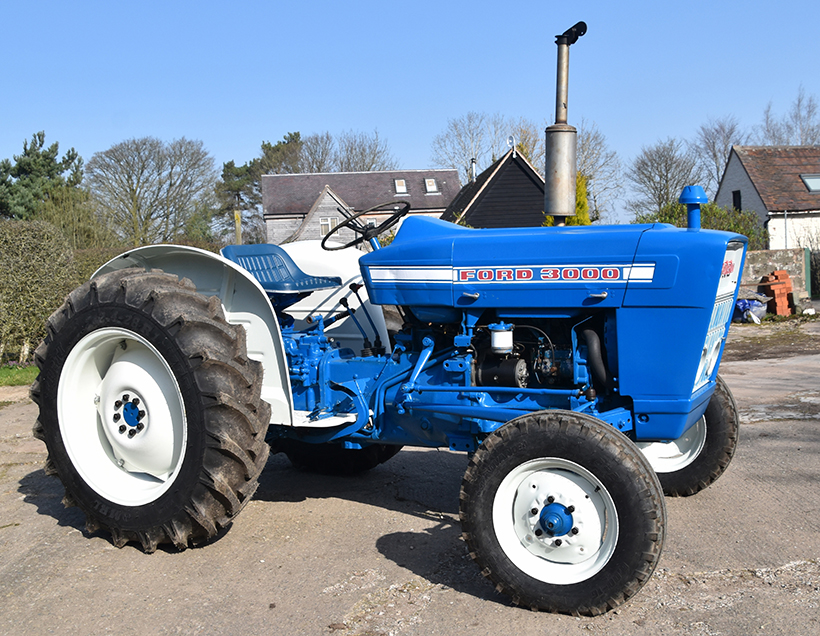
The Ford 3000 was a worthy successor to the Fordson Dexta.
After Derek sold his holding, he continued to farm for some of his neighbours and, although he’s now in his early seventies, he continues to work on a part-time basis, driving for a local plant-hire contractor.
“I like to keep busy,” said Derek, who is a member of the Shrewsbury Farm Machinery Club. “When I’m not working, I look after my collection of tractors. I currently own seven machines, and one of these will go to each of my grandchildren.”
Derek owns several makes of tractor, including David Brown and International, but he has a particular soft spot for Ford and Fordson models. He’s owned an early E1A for several years, but pride of place in his collection is occupied by the Ford 3000 (Serial No: B980854) featured here.
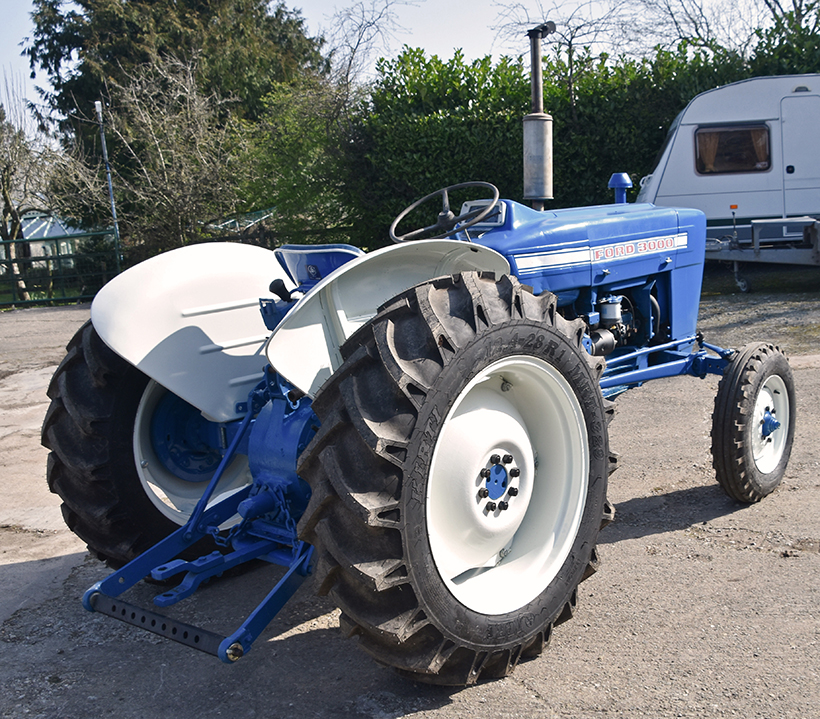
The 3000 was originally introduced to buyers at the December 1964 Smithfield Show, and Derek’s example has been restored to a high standard.
“I believe the 3000 is a local machine, and I bought it three years ago from my step-brother, Arthur Boston, who lives near Shrewsbury,” he explained. “The condition of the tractor was a bit rough, and I spent a lot of time restoring the machine.”
Historical background
Ford introduced a new range of tractors in 1964, to replace the ageing Fordson. The company used the designation ‘6X’ for the new machines, but the tractors are better known these days as the 1000 Series, or ‘Pre-Force’ range.
The latest tractors were the first to be built at Ford’s new plant at Basildon, in Essex. The line-up included the models 2000, 3000, 4000 and 5000 models, and the first three machines were powered by three-cylinder, direct injection Ford diesel engines. The 3000 filled a gap in the new unified range, giving a complete spread of horsepower.
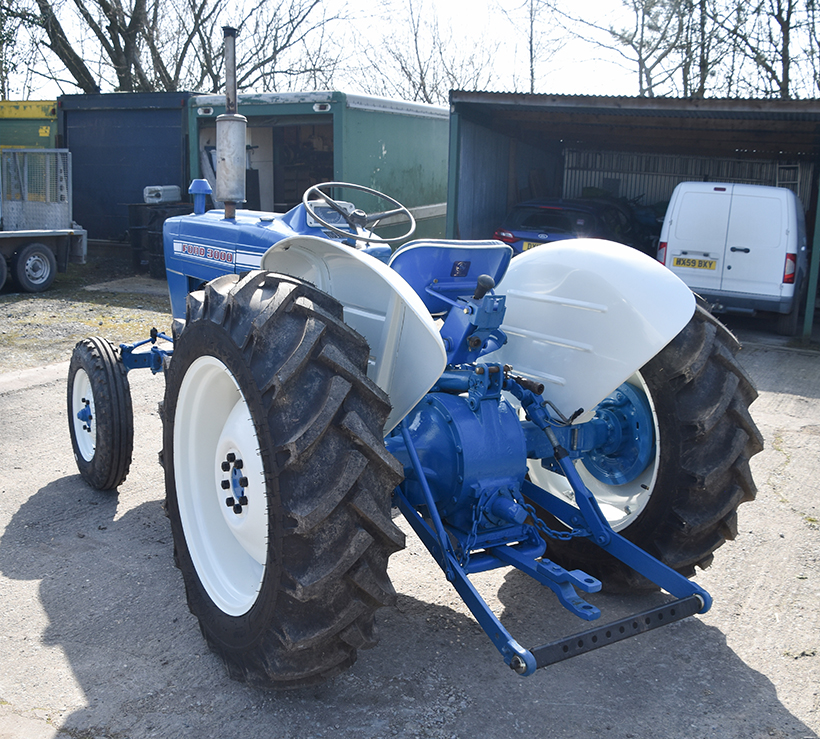
The Ford 3000 was typically paired with a two- or three-furrow plough, but could also handle larger versions, such as the five-furrow Ransomes TS 78.
The new range was a modern design featuring blue and white livery, and several useful items like a standard differential lock. Ford wisely chose to keep its previous branding policy, and tractors had both a name and number; in this case, the ‘Ford 3000 Super Dexta’.
In common with some of its rivals, the 3000 had a dual-range, constant-mesh gearbox, featuring four forward and one reverse speed in each of the high and low ranges. The more upmarket machines – including the 3000 – also had the option of the Select-O-Speed, 10-speed Powershift transmission. Powershift enabled the operator to select 10 forward and two reverse gears, by using a small lever instead of a clutch.
Also, the tractor could be switched from forward progress to reverse without stopping, and there was an independent, 540rpm PTO. The deluxe version was even more sophisticated, and featured a tri-speed PTO (ground/540/1000rpm). Motion was controlled by a hand selector located beneath the steering wheel, and a pedal was used to attach the tractor to implements.
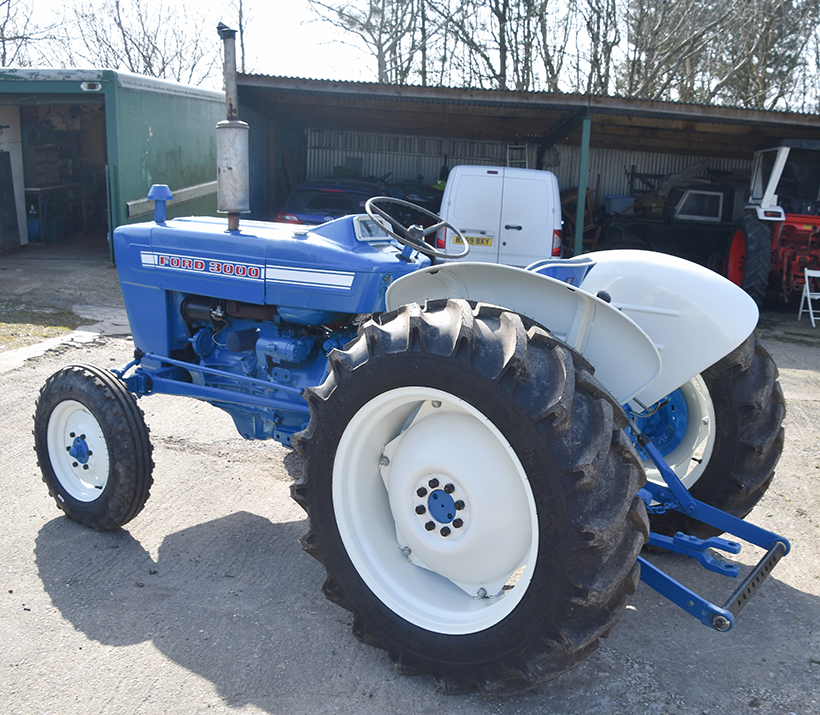
The tractor needed a new bonnet, front grille, cowling and mudguards. The original wheel centres had to be replaced with new ones, too.
Several advantages
Select-O-Speed tractors offered several advantages over multi-powered rivals, like the Massey Ferguson. These included engine braking in every gear, and a useful ‘park’ safety feature that locked the rear wheels. Unfortunately, the system did suffer from teething problems, and was eventually withdrawn.
Competition at this end of the tractor market was fierce, and the standard 3000 was keenly priced at just under £900. The Select-O-Speed transmission cost another £180, but sales were brisk thanks, in no small measure, to the reputation of the outgoing Fordsons. The three-cylinder engine was a capable performer, although it couldn’t match the pulling power of its long-stroke competitors. That said, the tractor could handle a five-furrow plough, particularly when fitted with additional front-end ballast.
The 3000’s specification was generous, and the tractor was equipped with fully independent hydraulics and dual category linkage. The advantage of these additions was that it allowed the use of larger implements. Popular options also included an automatic pick-up hitch, and power steering. Some specialist manufacturers also got in on the act and, during its ‘Pre-Force’ production run, Roadless introduced a 4WD version dubbed the Ploughmaster 46. This version used a similar Selene system as the Roadless Dexta.
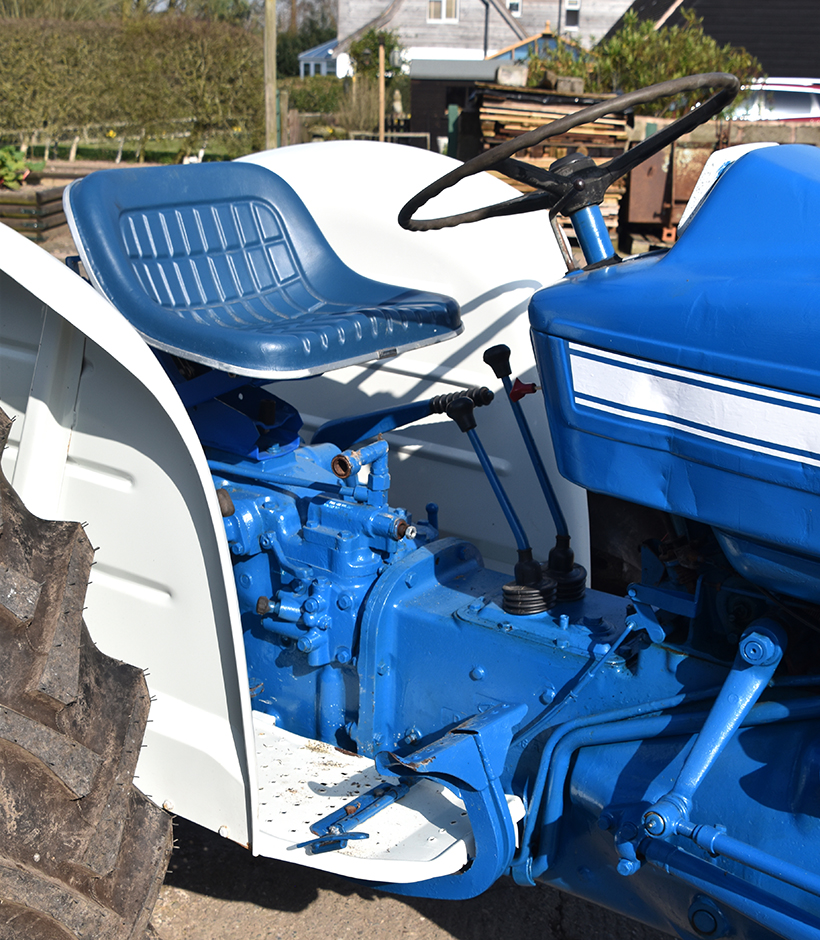
There’s no power steering on this Ford 3000 which can make it a bit heavy to manoeuvre, but the tractor is easy to handle overall.
Specialist variants
The mid-1960s was a buoyant time for Ford tractors, and sales were certainly good. As a result, the company was keen to push home its advantage and introduced a number of specialist variants, including narrow models for vineyards and orchards.
In 1968, the 6X was replaced by the Force, or 6Y range, with updated styling and other improvements. Although the ‘Super Dexta’ logo was dropped, the 3000 model remained part of the line-up, and stayed in production until 1975, when the model was replaced by the Ford 3600.
Coming from a farming background, Derek has some experience of working with tools, and did most of the refurbishment work on the 3000 himself.
“The tractor needed a new bonnet, front grille, cowling and mudguards,” he told me. “The wheel centres also needed replacing. Everything needed cleaning-off and then a new coat of paint. I like to take my time when doing a refurbishment, and have plenty of space to keep my tractors stored out of the weather.”

The controls are straightforward, and easy to use.
Derek used a local specialist for help with the paintwork, and he appears to have done a very good job. The wheels, in particular, look in excellent condition. He also acquired a number of spare parts from some well-known suppliers. “I bought the new wings from Agriline, and also used Sparex down in Exeter,” he said. “I also bought a new set of tyres from TNT in Ludlow. My family also run Ace Farm Supplies just up the road, in Condover, and like to help me out now and again.”
Derek has spent most of his life sitting behind the wheel of a tractor, and is very impressed with the Ford 3000. “It’s a nice tractor to drive,” he said. “There’s no power steering on my particular machine, which makes it a bit heavy, but the tractor is easy to handle overall. There’s plenty of horsepower for its size and, if anything, you have to keep an eye on the speedometer! Unlike some machines, there are no problems when it comes to starting this tractor, and the engine delivers good fuel economy. The tractor is also straightforward to service and maintain. I certainly intend hanging on to the 3000, if only to keep my grandchildren happy!”
BASILDON FACTORY HISTORY
Ford’s Basildon plant opened in May 1964, following the relocation of tractor production from the nearby factory at Dagenham. Ford’s European tractor venture had originally started in 1917, when a factory was built at Cork, in southern Ireland. This proved to be unsatisfactory for several reasons, and production was moved to a new facility in Dagenham, Essex.
In the early years, tractors were marketed using the Fordson brand. As farms became increasingly mechanised demand for tractors grew to the point that Dagenham struggled to cope. During this period, Ford was also looking to increase its car production, and decided to build a new factory.

The Ford, three-cylinder engine has plenty to offer, is a willing performer, straightforward to maintain and reliable.
The company took advantage of a Government incentive and moved along the road to the new town of Basildon. Built in 1947, following the New Towns Act, Ford secured a 40-hectare (100-acre) site. This met all the company’s needs, and construction of the new factory started in 1962.
The Basildon plant was eventually transferred to New Holland when Ford sold its agricultural division to Fiat. The factory is now operated by CNH global, and is now the only facility building tractors in the UK. CNH’s brands include New Holland, Case and Steyr.
Technical specification (diesel)
Production: 1968-75 (Ford Force 6Y)
Cylinders 3
Bore: 107mm (4.2in)
Stroke: 107mm (4.2in)
Displacement: 175cu in (2.9-litre)
Power: 35kW (47hp)
Transmission: 8 fwd, 2 rev, or 10 fwd, 2 rev (S-O-S)
Linkage: Category 1 & II
Weight: 1,678kg (3,700lb)
Tyre sizes: Front: 5.50-16; Rear: 12.4-28
Derek’s suppliers
ACE Farm Supplies
Unit 85, Condover Industrial Estate,
Shrewsbury SY5 7NH
Tel: 01743 718955
enquiries@acefarmsupplies.co.uk
Agriline Products Ltd
Harris Business Park Hanbury Road,
Stoke Prior, Bromsgrove, Worcs. B60 4DJ
Sparex Limited UK
Exeter Airport, Devon EX5 2LJ
TNT Tyres
Weeping Cross Lane,
Ludlow, Shrops. SY8 1JH
Tel: 01584 875 255
This feature comes from the latest issue of Ford & Fordson Tractors, and you can get a brilliant, money-saving subscription to this magazine simply by clicking HERE



